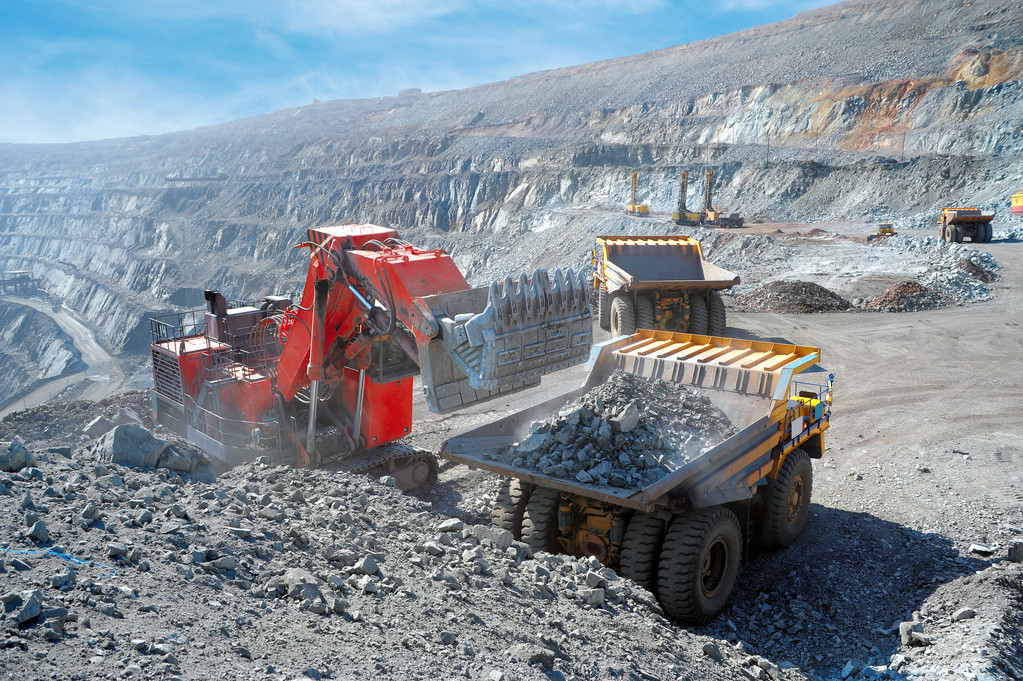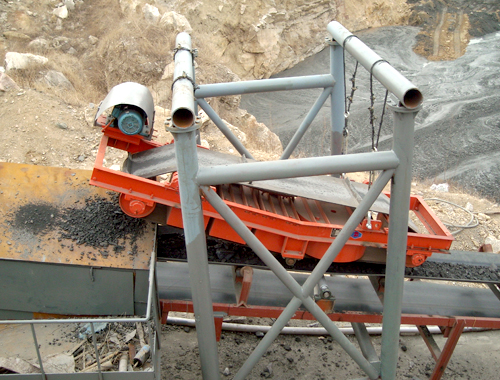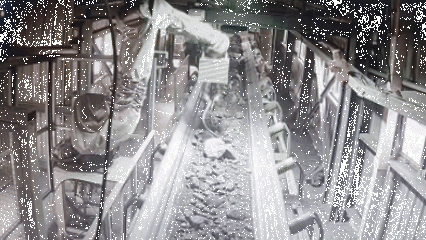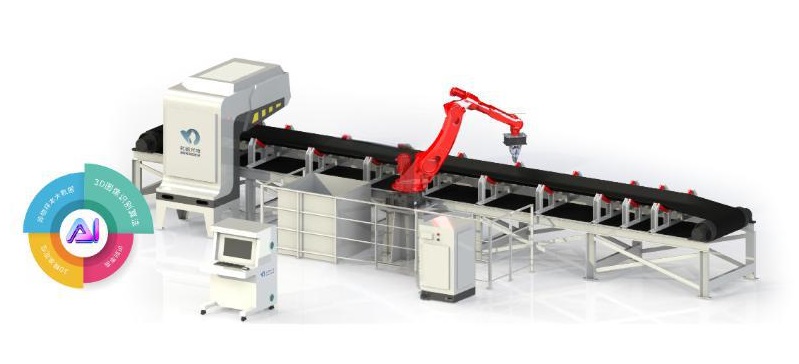Đăng ký nhận bản tin của chúng tôi và luôn là người đầu tiên nghe về những gì đang xảy ra.
The Dilemma and Breakthrough of Iron Removal in Iron Ore: When Traditional Magnetic Separation Meets Intelligent Transformation
May 26, 2025Iron ore, as the basic raw material of modern industry, its mining and processing efficiency directly affects the stability and economy of the steel industry chain. In the process of iron ore beneficiation, the iron removal stage is a key step to ensure the purity of the ore. However, the long-standing technical flaws of traditional iron removers have become a constraint on the development of the industry. In recent years, the application of new intelligent equipment represented by the Mingde foreign object removal robot has provided a brand-new technical path to solve this problem and injected new impetus into the transformation and upgrading of the industry.

1.The technical bottlenecks of traditional magnetic separators
The working principle of traditional magnetic separators (such as electromagnetic separators, permanent magnetic separators, etc.) relies on magnetic fields to adsorb ferromagnetic impurities. Although their original design intentions can meet the basic requirements, a series of problems have been exposed in practical applications:
For magnetite transportation lines, the strong magnetic property of the ore itself makes the magnetic field of the magnetic separator a double-edged sword - it has to adsorb the mixed iron ore while avoiding misjudging the valuable ore as impurities. This is more significant in the transportation of weakly magnetic hematite: Although increasing the magnetic field intensity can enhance the iron removal effect, it intensifies the magnetic agglomeration phenomenon of the ore, which instead affects the subsequent grinding and selection efficiency.

The identification ability of traditional equipment for non-ferromagnetic impurities (such as aluminum, copper, plastic, rubber, etc.) is almost zero, while the types of foreign substances mixed in modern iron ore mining are becoming increasingly complex, resulting in a large amount of non-ferromagnetic impurities entering the subsequent processes, affecting the smelting efficiency and product quality.
The electromagnetic iron remover needs to be continuously powered on to maintain the magnetic field. The average daily power consumption of a single device exceeds 200 kilowatt-hours. Moreover, the surface of the magnetic rods is prone to wear by ores, and the machine needs to be shut down every quarter to replace components. Take a beneficiation plant with an annual output of one million tons as an example. The annual operation and maintenance cost of the iron removal process alone accounts for more than 15% of the total equipment investment.
The physical limitation of the installation height lays even greater hidden dangers. To maintain an effective magnetic field, the magnetic separator must be in close contact with the conveyor belt. This design directly pushes the equipment to the risk front line. If the discarded steel components are adsorbed and get stuck in the gap between the equipment and the conveyor belt due to their excessive volume, the high temperature generated by the instantaneous friction will not only melt the magnetic rod assembly but also cause the conveyor belt to break, resulting in the paralysis of the entire production line.

2. Technological Breakthroughs in Foreign Object Removal Robots
When magnetic screening reaches the physical limit, the Mingde intelligent foreign object removal robot integrating the intelligent sorting system has made a three-level technological leap of "perception - decision-making - execution", and constructed a brand-new impurity treatment paradigm:
Multi-dimensional perception system
Integrating hyperspectral imaging and 3D vision scanning (building a three-dimensional model of foreign objects), it achieves full-category impurity detection with an accuracy of 1cm.
Adaptive decision algorithm
The dynamic optimization model based on deep learning can analyze the ore flow data in real time and autonomously adjust the grasping path and force of the robotic arm.
Modular execution unit
Equipped with multi-functional end tools such as vacuum adsorption, flexible grippers and high-pressure air spray, it can switch the removal mode according to different physical properties of foreign objects.

3. Industrial Value Brought about by Technological Upgrading
The foreign object removal robot of Mingde Optoelectronics effectively reduces equipment wear and tear and damage to iron ore raw materials by dealing with hard foreign objects such as metal debris and stones mixed in during the transportation of iron ore conveyor belts. It extends the service life of conveyor belts by 20% and reduces the maintenance frequency of crushers by 45%. Meanwhile, by reducing the collision and wear between iron ore and foreign objects, the raw material breakage rate has dropped from 3.2% to 1.5%, saving approximately 18,000 tons of high-grade iron ore loss annually, which is equivalent to reducing raw material waste by 2.4 million yuan per year for a single production line. This technology also prevents flammable materials such as wood chips and plastics from entering the high-temperature processing stage, reducing the risk of fire on the production line. It helps iron ore transportation achieve the "zero non-stop" goal, saving over 6 million yuan in equipment maintenance and accident handling costs for mining enterprises each year, significantly enhancing production safety and resource utilization.
4. Emerging from the New: The Future Vision of Clean Transportation in Mines
When the first electromagnetic iron remover was applied to the Swedish iron mine in 1923, perhaps no one could have predicted that a hundred years later, the sorting technology would embark on the intelligent path of "de-magnetization". When the development of a single physical effect approaches its limit, the only way is to break through the disciplinary barriers and seek a breakthrough point in the integration of light, magnetism, electricity and computing. The impurity removal on the iron ore transportation line is actually a microscopic mirror image of the entire manufacturing industry's transformation and upgrading.
The intelligent revolution in the iron ore industry is unstoppable. The technological breakthrough represented by the Mingde foreign object removal robot is not only an iteration of a single device, but also a fundamental subversion of the traditional production logic. When mines start to examine every grain of ore with the "eyes of AI" and precisely remove impurities with the "hands of machinery".